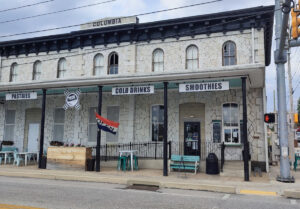FILE A COMMENT USING THE LINK BELOW: STAND TOGETHER AND SAY NO!
You must raise your voice before April 1 – and can post DAILY – as you should if you value the river and outdoor recreation.
We are in agreement with the Susquehanna National Heritage Area who is working diligently to oppose the proposed hydroelectric facility along the Susquehanna River at Cuffs Run. This project that would flood nearly 600 acres of land along the Susquehanna River and we ask you to join us in protecting Cuffs Run.
The future for this area is heritage tourism, outdoor recreation, river town revitalization, and small business development, not massive, man-made impoundments that flood woodlands, farms, homes, hiking trails, and historic landscapes to generate power that uses more energy than it produces simply for higher corporate profits, and then sends it out of state with little value to Pennsylvanians.

This is the fourth attempt to advance this type of project at this location. Previous efforts in 1970s, 1990 and 2011 were withdrawn after local opposition, including by Susquehanna National Heritage Area (SNHA) in 2011. The revived project is as concerning as previous proposals, especially after 20+ years of federal, state, and local investment in land conservation, recreation, and heritage and outdoor tourism along this part of the river. This includes major initiatives by the National Park Service , Pennsylvania Department of Conservation and Natural Resources (DCNR), Susquehanna National Heritage Area, Lancaster Conservancy, Farm & Natural Lands Trust, Lower Susquehanna Riverkeeper Association, York County PA, Lancaster County, Pennsylvania, local municipalities, and others.
The project will produce FEWER permanent jobs than the local heritage and conservation groups have already created in just a few years.
Imagine if the $2.5 billion proposed for this project was instead invested in more land protection, historic preservation, parks, trails, and community revitalization efforts. That would be true sustainable economic development and make our area an even more desirable place to live, work, and play than it already is.
We are asking you now to raise your voice and send your comment to FERC before it’s too late.
Comments and motions to intervene can be filed through March 31, 2024.
Anyone can intervene or comment, and you can comment multiple times. It is important for FERC to see the hundreds or thousands of people opposed to this project and the many different reasons why they are opposed. We anticipate many people commenting each and every day between now and March 31st. You do not need to be a property owner whose home would be destroyed to have a stake in commenting or intervening.
The FERC Docket Number for the Proposed Pump Storage Project by York Energy Storage:
P-15332-000
Here are just a few reasons you can object to and say you will be impacted by this proposed project (though we recommend that you personalize your response to FERC as much as possible to be effective):
- You walk, bike, rock climb, or run on the Enola Low Grade Trail in Martic Township, and the forested viewshed across the river from the trail will be impacted.
- You’re a hiker, and one of the most remotely beautiful sections of the Mason-Dixon Trail along the Susquehanna will be developed.
- You paddle or boat on the Susquehanna River and are concerned about additional hydroelectric projects impacting your experience, including viewshed, noise, and water levels on the river.
- You are a resident who is concerned about the continued loss of natural wildlife habitat and the impact of development on biodiversity.
- You fish and don’t want to see aquatic life harmed by another hydroelectric facility.
- You are concerned about the negative impacts on water quality in the river and the broader Chesapeake Bay.
- You do not want to see the loss of historic and cultural resources known to be present in the region.
- You worry about the potential impacts of the project to bird populations along the significant Mid-Atlantic migratory flyway.
- You own a business in the region that relies on outdoor recreation tourism and are concerned about the economic impact of this project on your business.
- You are concerned about the emission of methane, a potent greenhouse gas, as debris trapped by the dam decomposes.







